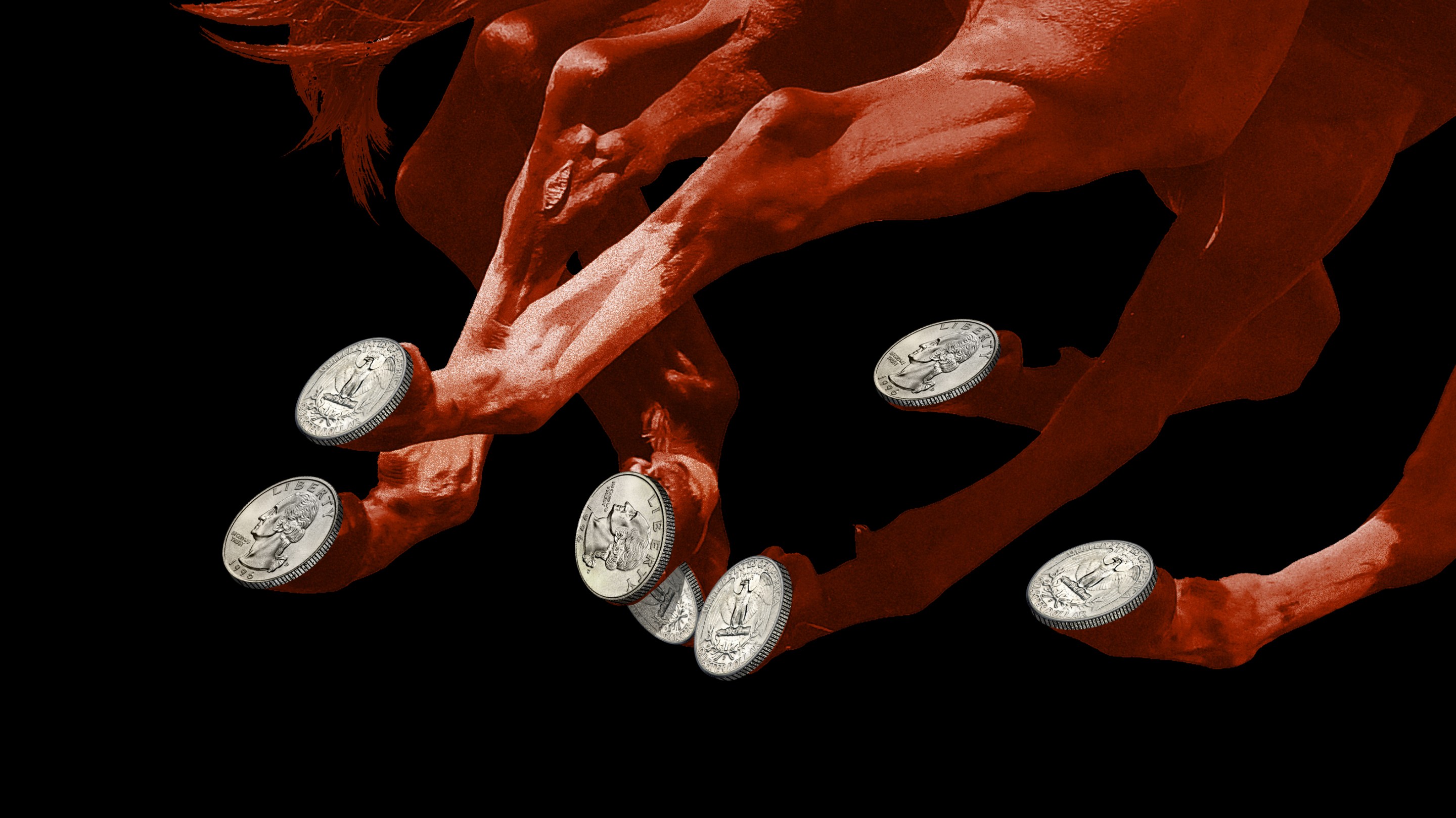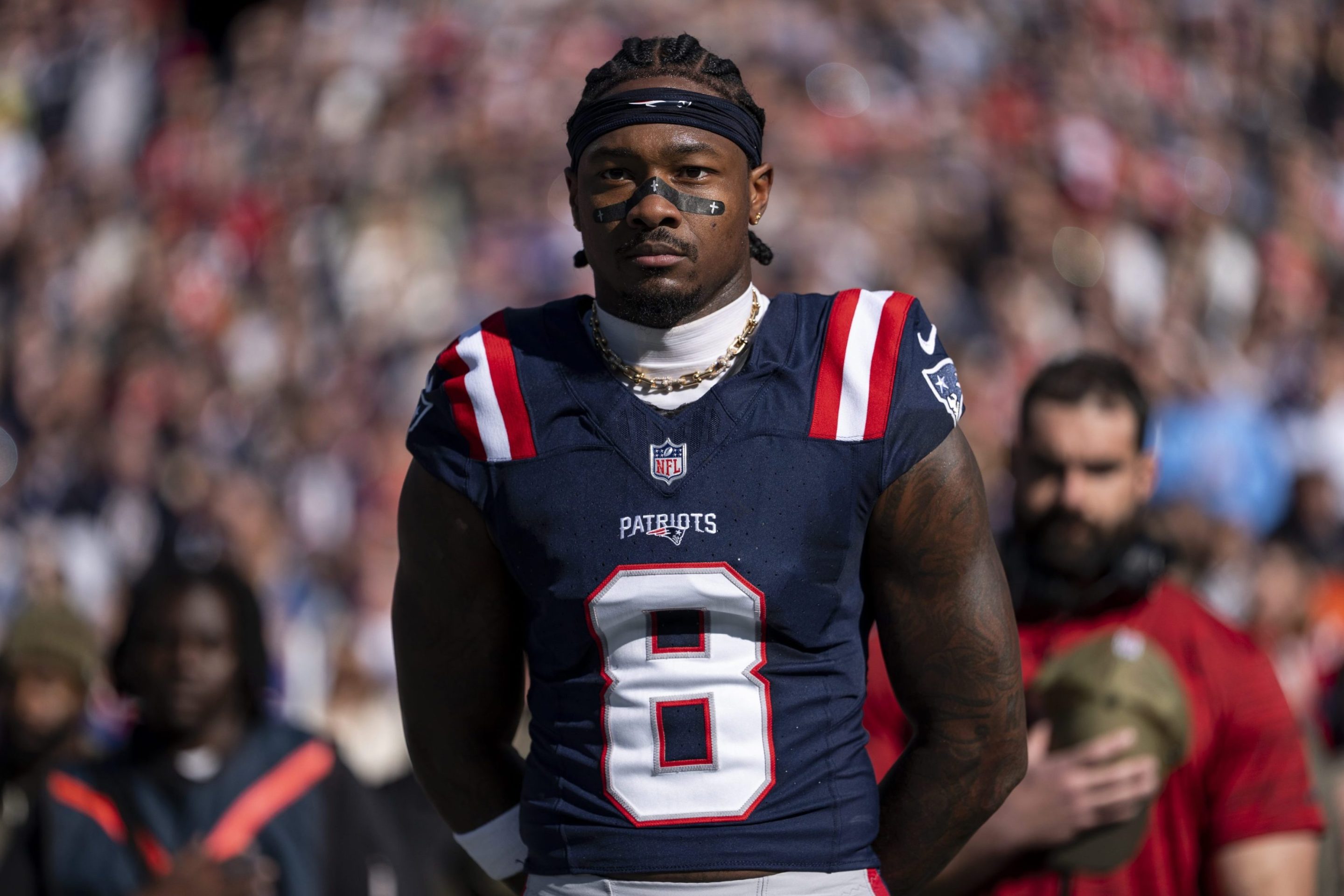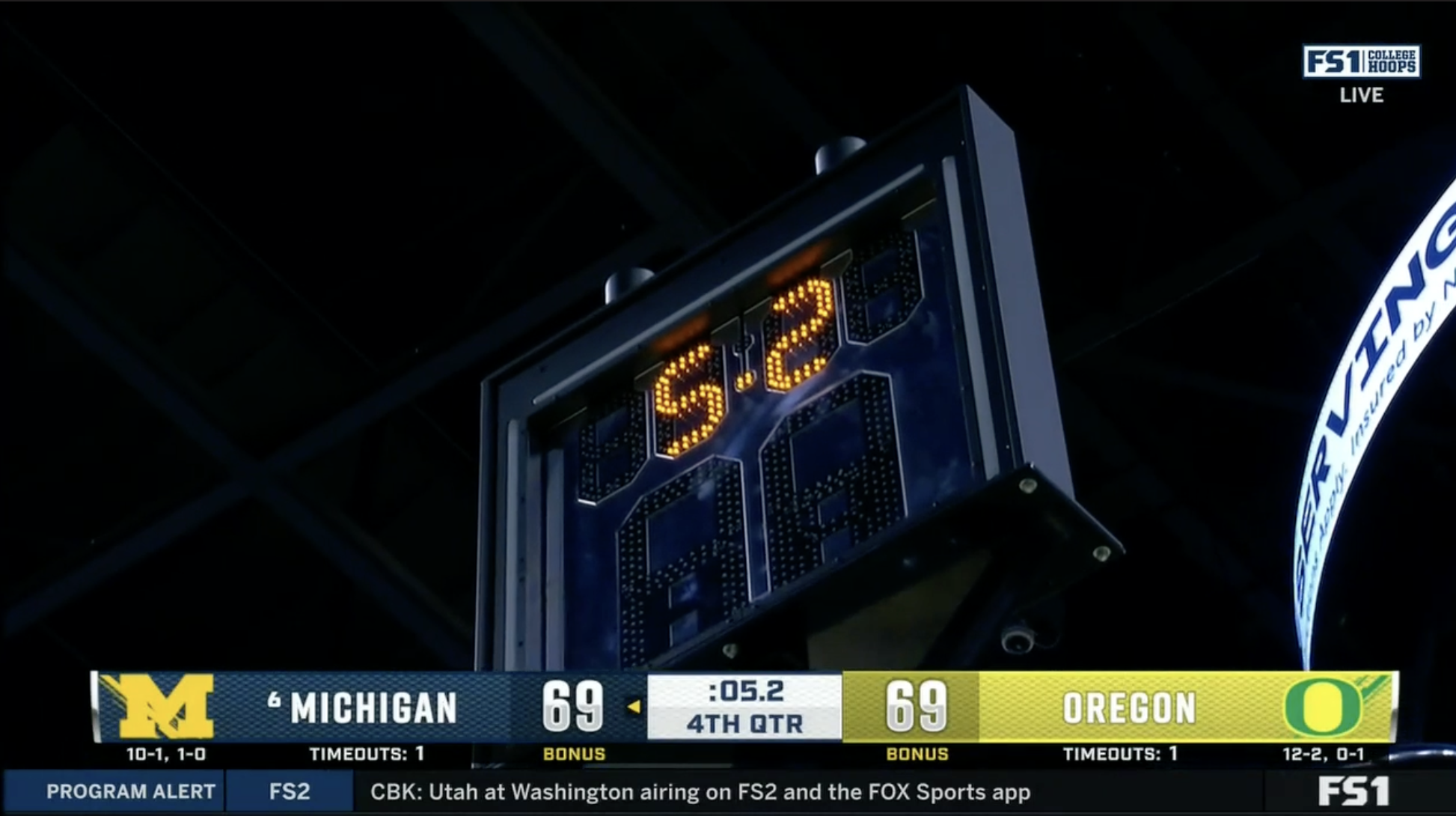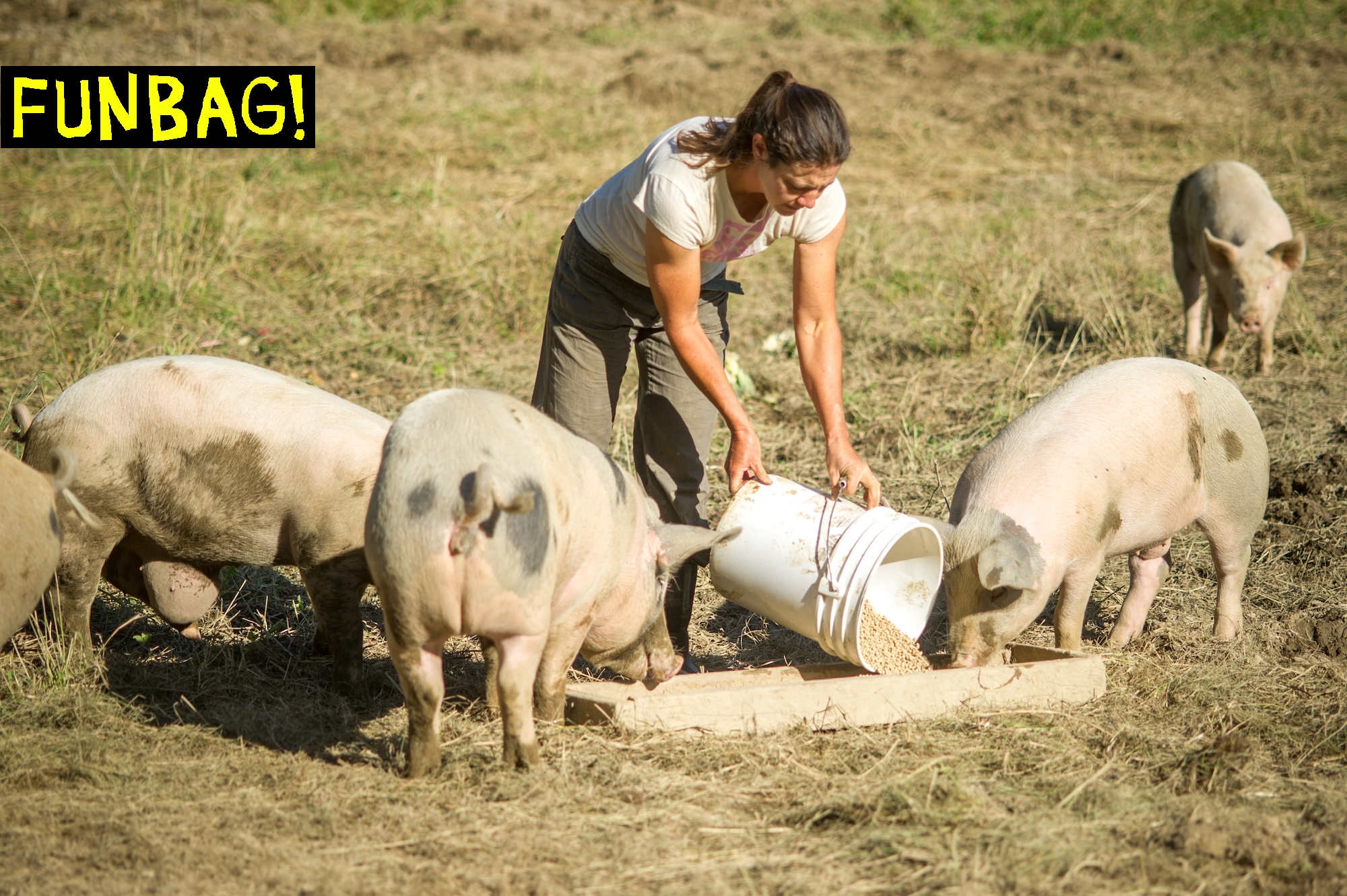Slots aren't saving racing. Neither are billions in public subsidies. Can anything?
In February of last year, Sharon Ward listened intently as her former boss, Pennsylvania Democratic Governor Tom Wolf, outlined his spending priorities in his 2020 budget address. Halfway through, she sat up as Wolf proposed a “historic” $200 million investment in tuition for 25,000 students at Pennsylvania’s state universities. They’d be paid for, Wolf said, “by repurposing existing tax dollars that are right now flowing into the Horse Racing Development Fund.”
The fact that horse racing receives this much public assistance in a single state was news to many outside the sport. Not to Ward, though, a policy expert who’d led Wolf’s budget office in 2015. She knew the industry’s Race Horse Development Fund existed, which, she says, “is more than you can say for most people—including most people in the legislature.” But now she was about to learn the full scope of that subsidy and just how it was spent.
Wolf’s plan would still leave $40 million annually for racing. But it’d be a big cut: Since 2004, when Pennsylvania legalized slot machines at racetracks, up to 12 percent of slot revenues, or almost $3 billion, has gone into the fund, most of which was then paid out as race purses.
Ward, 63, was asked by Susan Spicka, the executive director of Education Voters of Pennsylvania, a group that advocates for public schools, to write about the Race Horse Development Fund. A former schoolteacher, Spicka had ploughed a lonely furrow for years campaigning for moving money out of racehorse welfare and into education. She now saw an opportunity to reach a larger audience, and she knew there was nobody better than Ward at piecing together the state’s finances. But Spicka didn’t realize Ward already knew her way around a racetrack.
“I’m probably one of the few mothers in America who taught all three of her children how to read the Racing Form,” Ward says.
Ward’s mother grew up so close to Aqueduct Racetrack in Queens that photos of her house also captured the track. Ward herself grew up on the north shore of Long Island, where in high school she became the “quintessential student-government kid.” Later, after attending SUNY-Albany, she became an organizer and then a member of Albany’s city council. She won two terms, and in the summer would take her family to nearby Saratoga Race Course and teach them the basics of picking winners, an annual tradition that was part of the job description for area politicians, but which she greatly enjoyed.
And so as she began her investigation—“I came to this as a racing fan”—she was under the assumption that Pennsylvania horse racing probably merited this generous annual subsidy. Only after she began reading all the state audits she could find, the drawn-out minutes of Racing Commission meetings, and the rarely noticed fiscal reports, did she realize how wrong she was.
“The more I got into it, the more shocked I became,” Ward told me. “This is an industry that is completely hidden from public view. They’ve got a direct cash pipeline and they don’t want anybody to know about it.”
It’s a story rarely told outside the racing industry, and understandably so: Horse racing is propped up by tax dollars from casinos that have nothing to do with what happens on the track or at the betting windows. Although the sport loses public interest with each passing year, at least 24 states, almost three-quarters of those with racing, directly subsidize it with public funds. Based on publicly available information and statistical analysis, the total is likely close to $1 billion annually.
New York and Pennsylvania alone account for half of that amount; over the last 15 years, they’ve distributed around $6 billion. Both states also forgo countless millions each year in sales taxes they don’t charge on racehorse purchases, an exemption that doesn’t apply to other kinds of horses.
Throughout the country, horse racing has become so heavily subsidized that it resembles a public enterprise. In Pennsylvania, for instance, the Race Horse Development Fund is the state’s single largest economic development program, and it funds nearly every aspect of horse racing, from purses to support for breeders, health and pension benefits for horsemen, drug testing of the horses, and even racetracks’ advertising costs.
Ward’s 31-page report was released to little fanfare last May, but it may well be the first complete picture of the support that horse racing can’t live without and will do whatever it takes to hold onto. Justifying that tremendous entitlement has become a grave concern for those in racing and their political backers. One industry publication called Wolf’s proposal last year “an existential threat.” But the head of the Pennsylvania horsemen’s association predicted that their lawmaker friends would see it off, and he was correct. The governor’s plan to “bet on our kids instead of bankrolling racehorse owners” never earned support from Republicans or Democrats.
But the issue isn’t going away, especially not as the pandemic has dynamited state finances, leaving lawmakers with tough decisions. This February, Wolf again included a cut to racing’s subsidy in his proposed 2021 budget. And last week, the editorial board of The Philadelphia Inquirer called for the industry to be “put out of its misery.”
“It’s like a giant party on the Titanic,” Ward said, “except the guests know what is coming.” For racing’s dependence on public money, Pennsylvania might be just the tip of the iceberg.
For most of its history, horse racing in the U.S. had to stand on its own. The business model was simple: The amount bet on the races, known as the handle, measured the demand for a racetrack’s product. In a pari-mutuel wagering system, as exists in the U.S., the odds are set by the amounts in each pool (like win, place or show), and the track returns roughly 80 percent to the winning bettors. The rest of the money is—or was—used to fund purses and other operations, and pay the state a tax.
Then came racinos, or racetracks with slot machines, table games, or the video lottery terminals (VLTs) that mimic them. The first racino—Prairie Meadows in Iowa—opened in 1995, and since then horsemen everywhere have framed their plea for government support as an urgent defense from interstate competition.
From state to state, the taxes on those racinos are typically divided up in similar ways. Grandma plays the slots and of the money she loses, about half goes to the state: Some of that goes to property tax relief, some to education, some as payments to local counties or municipalities, and some goes to horse racing. Most of that goes to purses and thus to racehorse owners.
(In a given race, usually the top five finishers are paid out, and the owner receives 80 percent of the horse’s earnings while the trainer and jockey split the rest. Owners also pay their trainers a day rate per horse, and in some states jockeys also receive a per-race mount fee.)
And sometimes support for racing involves flat-out handouts. New Jersey’s horsemen, for instance, perennially squeezed by neighboring states, have seen many attempts to get slots at their tracks blocked by Atlantic City’s casinos. In the past, those casinos agreed to pay the occasional purse supplement, but now taxpayers have assumed that role. In 2019, Democratic Governor Phil Murphy approved legislation to give the industry up to $100 million over five years, most of it for purses. That same year, Texas Republican Governor Greg Abbott signed a bill that would divert up to $25 million in sales taxes on horse-related products to its racing industry, with $17 million earmarked for purses.
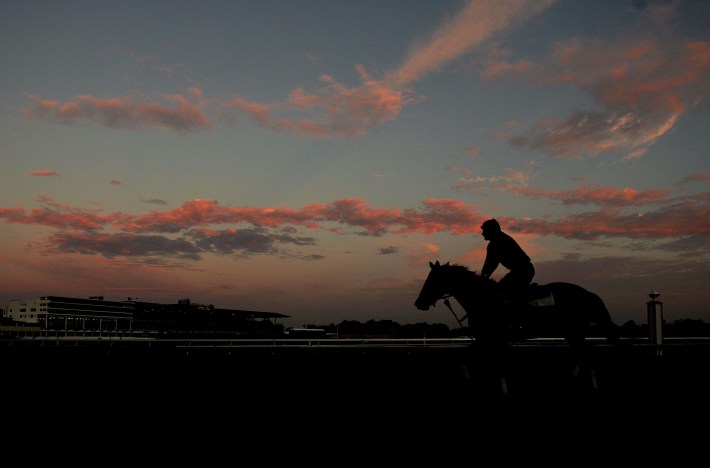
The first racinos were sold to lawmakers as a way to lure people back to the track for live racing and generate tax revenue from the races and the casinos. If they were playing the slots, went the thinking, they might bet the races too. Attendance was already on the decline, and the pari-mutuel taxes that a state collects from horse racing are still based on a model of live racing that was going extinct. Racetrack owners, given their political influence, were able to tie their existing facilities to the nationwide expansion in gaming.
Outside of tribal casinos and Las Vegas and Atlantic City, finding a place to gamble was much harder 25 years ago, so it made sense to let the tracks have a crack at it. “In many states, racetracks were the first places that had slots,” says Chris Rossi, an independent data analyst who works for several thoroughbred racing groups. “That was the primary way that casino interests got in the door.”
It seemed like a winning bet for states and the tracks, but most of all for the horsemen, since so much of the money was reserved for purses. The argument was that larger purses would attract more owners, and thus larger fields and better horses and a more inviting betting product. Handle would go up, and racing could stand on its own again. But that just hasn’t happened.
Bennett Liebman, an expert on New York racing and a former government lawyer, wrote a couple years ago, “Video lottery revenues are keeping racing alive, but the heart of the sport of horse racing is barely beating.”
But hope springs eternal: Nebraska’s circuit, which typically holds only two months worth of racing each year, is the latest with racinos on the way, which one casino developer there has argued will lure new owners and breeders with higher purses. Lawmakers (and voters) bought into the same tired argument, which for decades has yet to succeed in practice.
Today, horse racing’s financial picture is grim—if you remove the public support. Handle and purses, linked together for many decades, began diverging in 2005 as slot subsidies flooded the industry. That year, there were 52,257 thoroughbred races with purses close to $1.1 billion, according to the Jockey Club. In 2019, there were 30 percent fewer races, and handle had declined almost 25 percent, yet purses had actually increased to almost $1.17 billion.
The truth is, despite so many billions of dollars, horse racing in America has little to show for state assistance. Rossi sees a reckoning coming. “The level of subsidy does not match the level of support the public has for racing,” he says. There are fewer races and fewer horses being bred, fewer owners and fewer fans in the stands. Dozens of racetracks now depend almost exclusively on state dollars for their existence.
Incredible as it sounds, racetracks (with the recent exception of New Jersey) have not been required to show that they’re turning all this public funding into popular interest or sustainability. The cut they get from casino revenues is typically fixed, so what really matters is how well the slots do, and not, as it was historically, the bets on their races. Not surprisingly, that gives tracks little incentive to expand their customer base. In harness racing, which is one-tenth the size of thoroughbred racing in terms of handle, plenty of tracks now give away purses that exceed the bets coming in, a zombie-like state of affairs that several thoroughbred tracks are fast approaching.
Rossi, 42, a no-nonsense New Jersey native who has looked at the data every day for the last decade, believes subsidies only mask the collapse of racing circuits that grow more financially disconnected every year. “Purse money has done absolutely nothing for racing,” he tells me.
He points out that the early wave of racinos came in places looking for a competitive edge over their neighbors. “They were sold as, ‘We can compete with the bigger circuits by attracting their horses with better purses,’” he says. But then the bigger circuits got slot subsidies too.
Now, a quarter-century later, other than the few states that hardly needed help in the first place—Florida, Kentucky, New York, and California—Rossi sees decline everywhere. “Everybody else is in bad shape. But the level of bad shape is the question.”
Rossi measures the health of a racetrack by a handle-to-purse ratio that indicates its ability to support itself entirely through wagers on its races. He looks for between four and five percent as the range of self-sufficiency. For thoroughbred racing, in 2019, that number was 10.19 percent, “which shows how much purses are subsidized.”
In 2020, handle was only marginally lower on 8,500 fewer races, but because tracks couldn’t count on casino payments during the pandemic, purses fell by almost $300 million, or 25 percent.
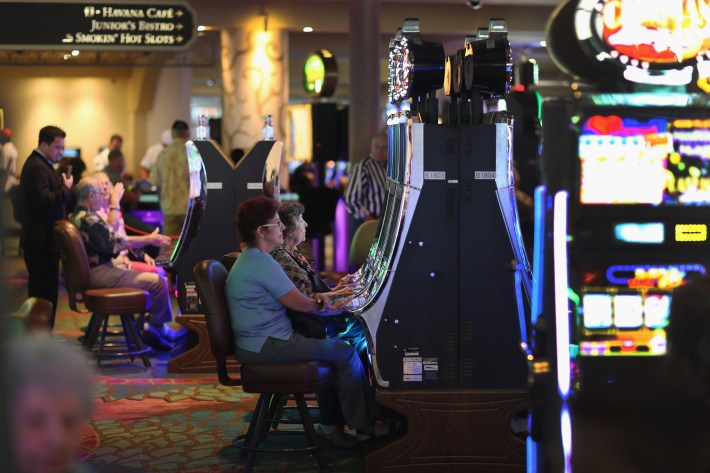
The early months of the pandemic said a lot about where different racetracks fall on the “spectrum of collapse,” to use Rossi’s words. Some tracks never closed, while others closed for a couple months but then reopened for live races without fans. Others, like in New Mexico, found it hard to resume full meets because they had come to depend almost exclusively on slot machines for their survival.
“We could open horse racing up, but if the casinos don’t open we’re going to be in a pretty bad spot,” Izzy Trejo, the executive director of New Mexico’s racing commission, told the Santa Fe New Mexican last April. “The marriage needs to stay intact. A divorce is deadly to horse racing because we’re not going to generate enough money to have substantial purse money if we depend merely on pari-mutuel handle that doesn’t involve casinos.”
New Mexico, a state known predominantly for quarter horse races, was one of the first to permit slots at its tracks, and it set one of the most generous subsidies too: Twenty percent of the net win from its five racinos would go to purses. Close to $900 million has been deposited into the horsemen’s purse account since 1999 and yet the industry, as Trejo baldly stated, is unsustainable on its own.
The handle-to-purse ratio at New Mexico’s tracks in 2019 was 52 percent. “They are the vanguard of collapse,” Rossi says.
Rossi looks at the number of races as a sign of health too—there are only so many horses to go around, and the thoroughbred foal crop is almost half of what it was 15 years ago. Despite record-high purses in 2019, New Mexico had 2,489 races, or 20 percent fewer races than a decade earlier. Last year, there were 1,520.
“Once you start giving up that much racing, you don’t get it back,” Rossi says. “There’s no subsidy that can change those forces. At some point, the government’s gonna ask, ‘What the hell is going on here?’”
Across the country, subsidies have become the end rather than the means. Few states, because of the decline in on-track handle, receive enough revenue from racetracks to balance out the cost of their oversight. In New Mexico, for instance, horse racing provides only $1 million in fees and a small pari-mutuel tax, a total equal to one-third of the state racing commission’s budget. In other words, the public foots the regulatory bill as well.
In the home of the very first racino, horse racing gets a free ride. Iowa, with one racetrack and a few county fairs (and, perhaps for only one more year, greyhound racing), distributes up to $25 million to the industry each year. That one track, Prairie Meadows, runs thoroughbred and quarter horse races, and opened in 1989 (backed by the county with $40 million in bonds) to a sellout crowd of more than 7,100 people. Two years later it was in Chapter 11 bankruptcy. It reopened in 1995 after the Iowa legislature approved slot machines there by a single vote. Racinos were born.
In the last quarter-century, Prairie Meadows’ casino has provided $450 million in purse subsidies. Racehorse breeders have also earned north of $50 million in casino-funded awards, and so Iowa horse racing has been the beneficiary of at least half a billion dollars. The state’s Gaming and Racing Commission doesn’t keep a record; I had to compile it myself from commission meetings and annual reports.
Despite all this, the racing industry in Iowa is small and getting smaller. In 2001 Prairie Meadows held 774 thoroughbred races over 97 days, with an average field size of 8.7. In 2019, the track held 591 thoroughbred races over 67 days, with an average field size of 6.6. And the breeding sector is practically nonexistent. In 2020, 66 mares were bred to nine Iowa stallions, a decline of almost 92 percent from 2000. Only 82 Iowa-bred foals were born, an 84 percent drop over the same period.
Yet, thanks to the highest-grossing casino in the state, purses at Prairie Meadows remain largely the same each year. And they are expected to rise. In 2019, Iowa legalized sports betting, and horse racing will get a four-percent cut of those receipts. But unlike sports betting, which paid $1.3 million in taxes to the state in 2019, horse racing pays nothing.
A 1989 state law provides a tax credit to Prairie Meadows if its pari-mutuel handle is less than $90 million in a given year. In 2019, it was $70 million, and so its pari-mutuel tax was written off entirely. I asked a commission administrator if Prairie Meadows has ever paid this tax. “They have never hit that threshold,” he told me.
New York’s state constitution says that from pari-mutuel wagering on horse racing, “the state shall derive a reasonable revenue for the support of government.” But over the last 15 years, it’s been more accurate to say that horse racing in New York has derived a reasonable revenue from the government. Absent direct subsidies, which run close to a quarter-billion dollars each year now, eight or nine of its tracks would likely close, “given the market fundamentals,” according to a recent study of New York gaming. Recently, the state gaming commission stopped reporting attendance figures from its eight harness tracks in its annual report; their $100 million in annual subsidies account for an average of 83 to 84 percent of their purses, but so few people go to their races that one executive likened their facilities to television studios.
Those that wouldn’t close—famed thoroughbred tracks like Saratoga Race Course and Belmont Park, and maybe even unloved Aqueduct—are run by the New York Racing Association (NYRA) and for the last decade have been supported by the largest slots parlor in the world. But even NYRA’s only standing today because of a bailout unprecedented in the sport’s history, and a deal that looks worse all the time.
In November 2006, NYRA filed for bankruptcy, with a cumulative operating deficit of more than $135 million and debts to the state of $54 million. Two years later, the state granted it a new 25-year franchise and pulled it out of bankruptcy by canceling the majority of that debt and giving it another $105 million to pay off about $80 million in private debt. NYRA turned over the rights and titles on its three tracks to the state, but the state agreed to pay the property taxes, while declining to charge NYRA rent.
Most importantly, a casino at Aqueduct in Queens was already in the works, and the agreement established the cut that NYRA would get—after its third year, 16.5 percent of the casino’s revenues for purse money and breeder support, capital operations, and expenditures. This was fixed regardless of how well that casino did. In the meantime, the state agreed to help pay NYRA’s operating expenses until the casino opened.
If this sounds like a sweetheart deal, it was, says Steve Newman, a former first deputy comptroller in New York City who served on NYRA’s oversight board for a decade and was a thorn in its side at annual meetings. “Everyone wanted racing to succeed, but they wanted it to succeed on its own, not by the government subsidizing it."
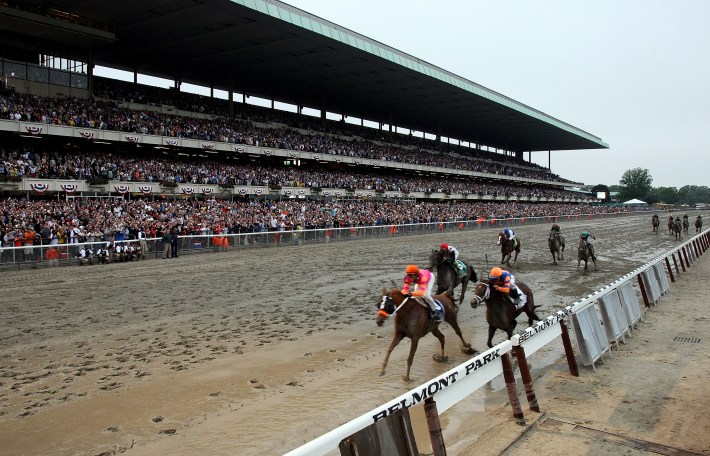
It perhaps shouldn’t be surprising that Resorts World Casino, which is New York City’s only casino and opened at Aqueduct in the fall of 2011, became the highest-grossing slots parlor in the world, according to its operator, the Malaysian company Genting. In 2019, the machines there brought in a net profit of almost $900 million, breathing new slot-infused life into New York racing.
The oversight board stressed the need for NYRA to create a roadmap for long-term profitability without depending on video lottery terminal subsidies, but the nature of the bankruptcy agreement made it hard to sell that, Newman says. Even as its coffers began rapidly filling up with casino payments, to his knowledge NYRA has yet to produce a plan.
New York State’s chief fiscal watchdog, comptroller Thomas DiNapoli, also stressed a need for self-sufficiency. In 2016, he released an audit that showed NYRA had run up operating losses of $109 million for five previous years, despite officials having reported surpluses. How did they spin that? By including VLT subsidies and excluding “certain ordinary and necessary expenses” like pension contributions and health benefits from their profit and loss calculations, DiNapoli said. (NYRA denied there was anything unsavory in this.) DiNapoli asserted that “without the significant amounts of VLT revenue subsidies, there is considerable risk that NYRA would have been financially stressed in recent years.”
Instead, New York thoroughbred racing has been lifted by approximately a billion dollars since Resorts World opened, and Newman suspects NYRA has been able to avoid paying franchise fees to the state. (I also sought from the state’s Department of Taxation and Finance the amount of property taxes the state has paid on NYRA’s three tracks, but my public-records request was delayed.)
In 2019, Resorts World gave NYRA almost $110 million, and it picked up another $22 million from additional VLTs associated with off-track betting corporations. About 38 percent of NYRA’s purses come from this money, which is less than other Mid-Atlantic tracks, where the number is well over 80 percent. Thanks to the casino, NYRA’s so flush that it’s offering shipping money and bonuses to out-of-state runners, and it recently announced record purse levels at the upcoming Belmont Park meet; as always, the subsidies are being described as a way to boost field size and attract more wagering, despite a mounting pile of evidence that it does no such thing.
New York’s horsemen are well aware of the pressure to keep their wagon hitched to Resorts World. The website of the New York Thoroughbred Horsemen’s Association, for example, encourages its members to donate to its political action committee, or PAC; the lead photo on its website is of its chairman, Joe Applebaum, with Andrea Stewart-Cousins, the Democratic majority leader of the New York State Senate. At the top of its agenda is “safeguarding” VLT revenue.
Privately, however, Applebaum wrote to members last June that the pandemic had shown that “smaller tracks that derive almost their entire purse funding from casino supplements are holding back tracks like NYRA that could exist on their own, without casino supplements.”
Since 2010, the group’s PAC has donated at least $72,550 to political campaigns, according to state records, including $24,500 to the Democratic Assembly and Senate campaign committees and $5,000 to Stewart-Cousins. New York’s thoroughbred breeders also have a PAC, and they’ve spent $50,200, including donations totaling $25,000 to Gov. Andrew Cuomo’s campaign fund and $10,000 to the Democratic Senate campaign committee.
New York has campaign contribution limits; Pennsylvania doesn’t. Which might explain why a state with five fewer tracks than New York, and a circuit that has always existed in its shadow, subsidizes horse racing nearly to the same level. Since 2017, as far back as records go, the horsemen’s association and breeders’ association in Pennsylvania have raised more than $1 million and donated $600,000, spreading their money around Harrisburg to lawmakers from both parties.
“The legislature does their bidding,” Sharon Ward told me. “I think it’s shameful. They’re able to protect themselves in part because they operate in the shadows.”
How the horsemen raise that money is unusual. Ward found that at Parx Casino, a racetrack outside Philadelphia, the horsemen’s association charges owners a small fee per horse per race, and takes half of it for its PAC. When the association raised the fee from $10 to $20 a couple years ago, it did not notify members or tell them it was voluntary, according to a 2017 audit of the group. In response, the association modified page 54 of its handbook to let owners and trainers know that they can submit notification, in writing, that they do not “acquiesce to the deduction” for the PAC.
Ward puts it succinctly: “I hesitate to say it, but it’s like they shake down the horse owners.” Since 2017, the horsemen’s PAC has raised $452,000 from these fees, according to Transparency USA.
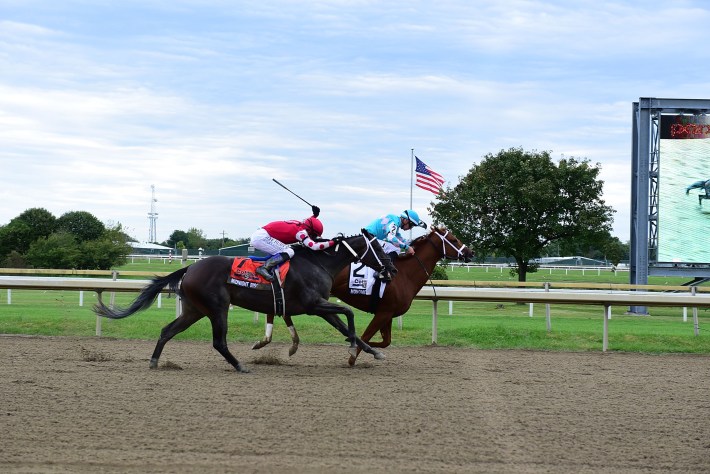
These bets do not always turn out winners—the horsemen have donated $25,000 to Tom Wolf. Though the governor is their present-day nemesis, he did sign legislation in 2016, a year after he took office, that has made it more difficult for the state to take a dime out of the Race Horse Development Fund, let alone $200 million annually as he has suggested.
By 2015, the Pennsylvania circuit's pari-mutuel tax had fallen to just over $11 million, which only covered half of its regulatory costs. (It has since dropped below $9 million.) Purses, meanwhile, had grown from $56 million in 2003 to more than $200 million, with close to 90 percent coming from slot machines at its six racinos. This explosion briefly attracted larger fields and interest from out-of-state horseplayers—until other states joined the purse party—but tracks get four percent on those bets and the state receives nothing. (In-state wagers, meanwhile, fell by half.)
This might have necessitated a rethink, but instead, state legislators passed a law called Act 7 that uses the Race Horse Development Fund to pay for programs that the industry used to cover with its own revenue, like drug testing of horses. Unlike when the racinos first opened, there was no longer talk of horse racing providing any money to the state’s general fund.
Far from giving up anything, as Ward found, the racing industry was handed new powers over its own enforcement. The new State Racing Commission was rolled into the Department of Agriculture, which Ward says was an intentional choice by the industry. “They really try to wrap themselves in that public mythology around agriculture. The horsemen never talk about the bulk of the funds, which are the purses.”
Five of the commission’s nine members have financial interests in racing—four are from different horsemen’s associations, who get to sign off on the decisions that affect their membership, and the fifth is a veterinarian employed by the lab that handles Pennsylvania’s drug testing. Their ethics rules, for a public agency, are “extraordinarily loose,” Ward says. Members get to decide what is and is not a conflict of interest; they’re allowed to have a stake in a horse or horse farm; and they can collect the purses and breeder awards they’re in charge of doling out.
In Ward’s telling, this whole reorganization was inexplicable, and seemed designed to discourage transparency. She wrote:
“Act 7 also makes clear that the state employees responsible for oversight of the industry don’t work for the secretary of agriculture, the governor, or the people of Pennsylvania. They work for the Commission … The bureau directors serve and report to the Commission only and the law makes explicit that they do not report to the Department of Agriculture. All licensing, enforcement, and administrative operations are assigned by the Commission.”
On top of all this, the most important part of Act 7 was that it made the Race Horse Development Fund a trust, meaning that new legislation would be required to transfer money out of it.
“The governor and legislature can move money from one line to another,” Ward says, “for anything—except for the racehorse fund.”
Two decades in, the case for subsidies has changed. Instead of promising to bring in more bettors and taxes for the state, the argument now is that horse racing is too big to fail.
In early February, when Gov. Wolf once again proposed his cut to racing’s subsidy, a spokesman for one industry group said, “This proposal would result in the end of horse racing, which supports 20,000 jobs, delivers an annual $1.6 billion economic impact, and preserves hundreds of thousands of acres of open space.”
Yet in her report, Ward found that there are just over 1,700 full-time racetrack jobs and fewer than 10,000 direct jobs overall, according to a study commissioned by the state’s own Department of Agriculture. In comparison, Ward found, the tourism industry, which creates 310,000 direct jobs, received just $18 million in state funds in 2019, versus $240 million for horse racing.
“Even if you’re someone who believes we should spend tax dollars subsidizing industries,” Ward says, “this one should be at the bottom of the list.”
Every few years, the industry trots out industry-financed economic impact studies from racing organizations or trade groups like the American Horse Council. Their numbers then appear in state or state-commissioned reports as authoritative sources, when they’re anything but.
I looked at a recent one treated like gospel, published in 2018 by the American Horse Council about New York’s horse industry. It certainly didn’t show its work; it was thinly sourced and confusing, with lots of bold numbers interspersed with glossy photos of horses from NYRA racetracks, photos credited to New York’s thoroughbred horsemen’s association. It reported that New York racing created 12,815 direct jobs and close to 7,000 in indirect jobs—tourism included—for a total impact of $3.08 billion on the state’s economy. It later noted, however, that just 2,583 people were employed in “racing and track operation,” which seems to be the most relevant category. The study, it acknowledged, was commissioned “with major support” from New York’s thoroughbred horsemen’s and breeders’ associations.
NYRA’s own website tells a different story: “The industry is responsible for the generation of 17,400 jobs and the contribution of more than $2.1 billion into New York’s urban, suburban economy.”
In a 2020 paper, Bennett Liebman, Andrew Cuomo’s former deputy racing and gaming secretary, traces claims of 40,000 jobs in New York racing (“always a suspicious number”) all the way back to 1982, after which it was peddled for the next 30 years by industry and state officials and echoed by reporters. Other equally poorly sourced, constantly repeated figures followed: 35,200, 32,500. The defense remains that these supposed benefits are so large that they eclipse all other rationales for horse racing, including the actual revenue that the state collects from it.
In racing, these studies appear to hinge on trickle-down economics. Most racehorse owners are already well-to-do since it costs tens of thousands of dollars to care for a racehorse, let alone purchase one. The ultra-rich in thoroughbred racing, like the ones who rule countries or emirates, see their participation as a status symbol, and some extra prize money won’t change that. Their trainers will see more money, and, perhaps, down the line, so will their low-paid grooms, but beyond that? The fact that some of the most successful trainers have been sued and fined by federal and state departments of labor for wage theft from their workers offers somewhat less optimism.
“I think this boils down to greed versus need,” Ward says. “The horsemen and the owners want to keep their money and the rest of us have to wait in line. They’re always at the head of the line with their hands out, and it’s very hard to justify in the middle of the pandemic when there’s so much suffering everywhere.”
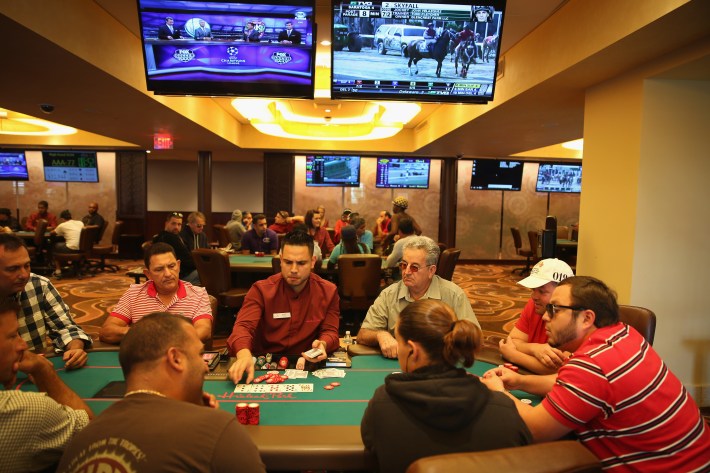
For now, at least, racing may have less to fear from politicians and more from the casino companies that they let in the front door. Run-of-the-mill tracks, like Penn National Race Course, were heading toward extinction when they suddenly became the basis of huge gaming portfolios; Penn Gaming, its owner, now has 41 casinos across the country. In Pennsylvania, there are now slot parlors outside of racetracks, and the tracks either don’t get a cut or their cut is not as large. Late last year, Calder Race Course in south Florida shuttered after 50 years once its owner, Churchill Downs Inc., found a legal loophole to decouple its casino license from live racing at the track.
Most states have either introduced sports betting or plan to. And the pandemic has accelerated casino companies’ push into mobile gaming. Horse racing has never faced this much competition for the betting dollar. Twenty-five years after horse racing went down the road of government dependence, it could be that racinos were a poisoned chalice to begin with.
“The subsidy will decline and the racing interests will go with their hat in hand, and say, ‘We’re the whole reason why you’re able to have this. We were the ones who allowed you to have gaming licenses. We allowed you into our facilities to begin with,’” Rossi predicts. “And it remains to be seen what will happen, but I would say it’s 1-to-5 that the government will say, ‘Go pound sand.’”
